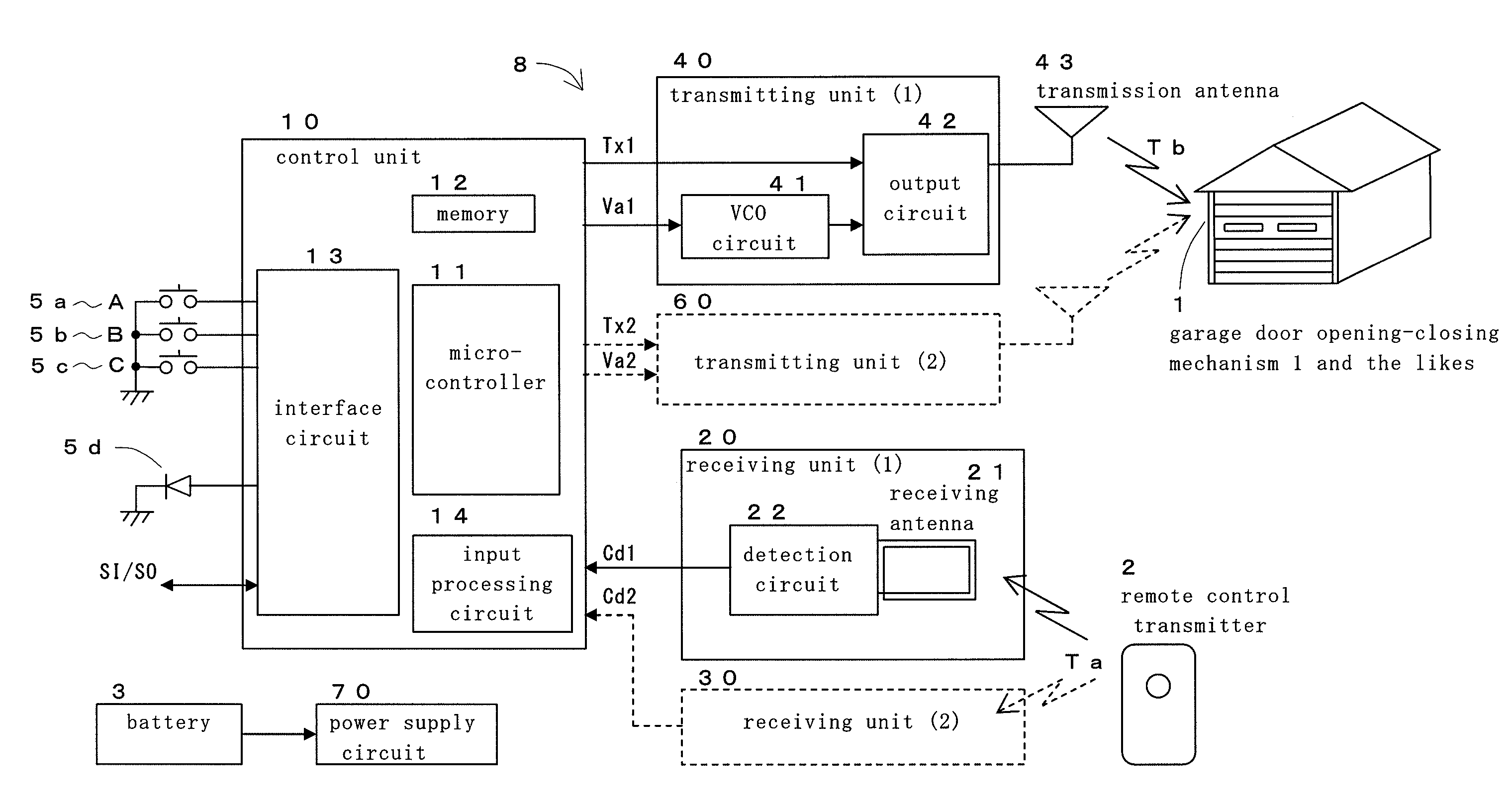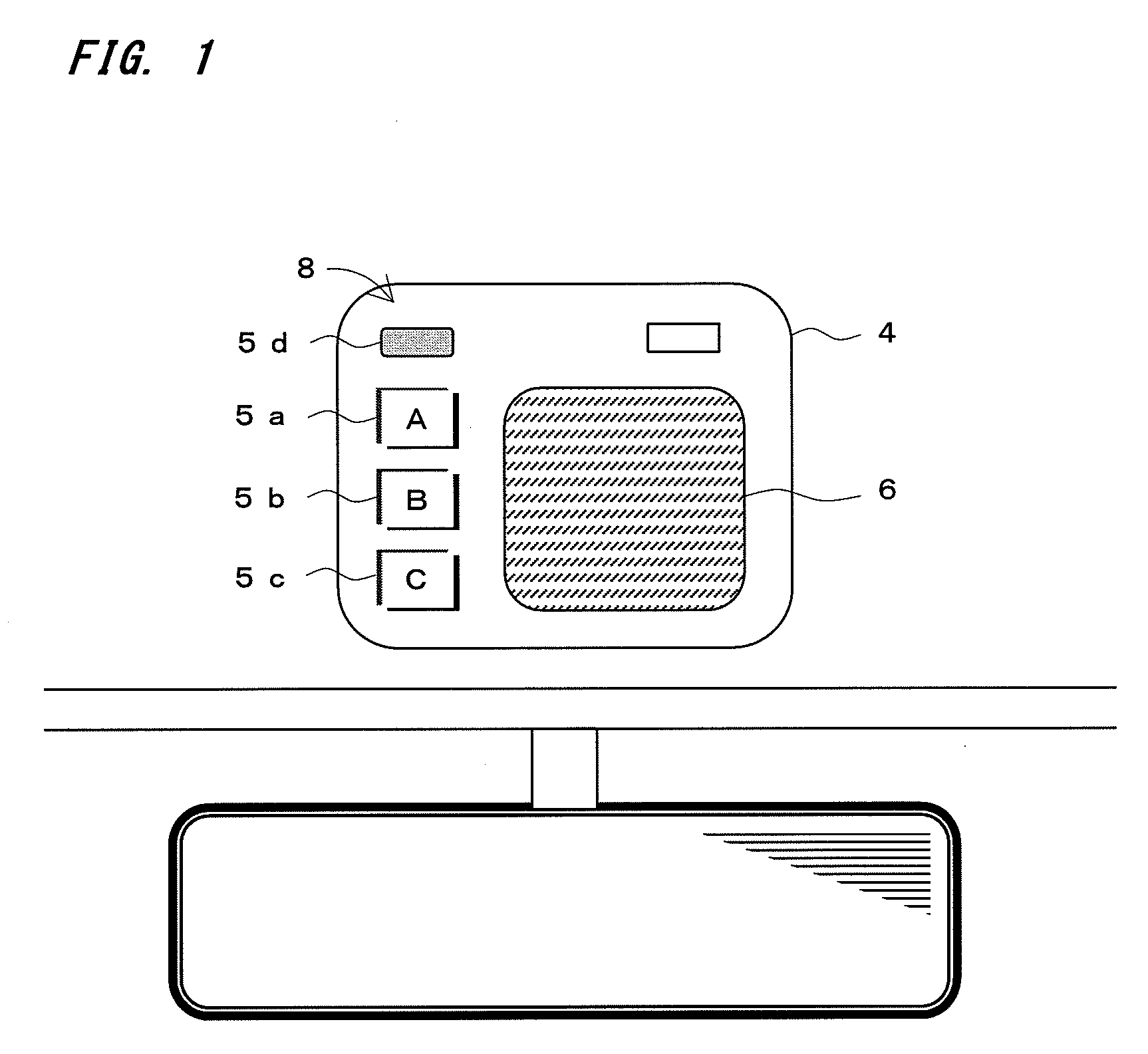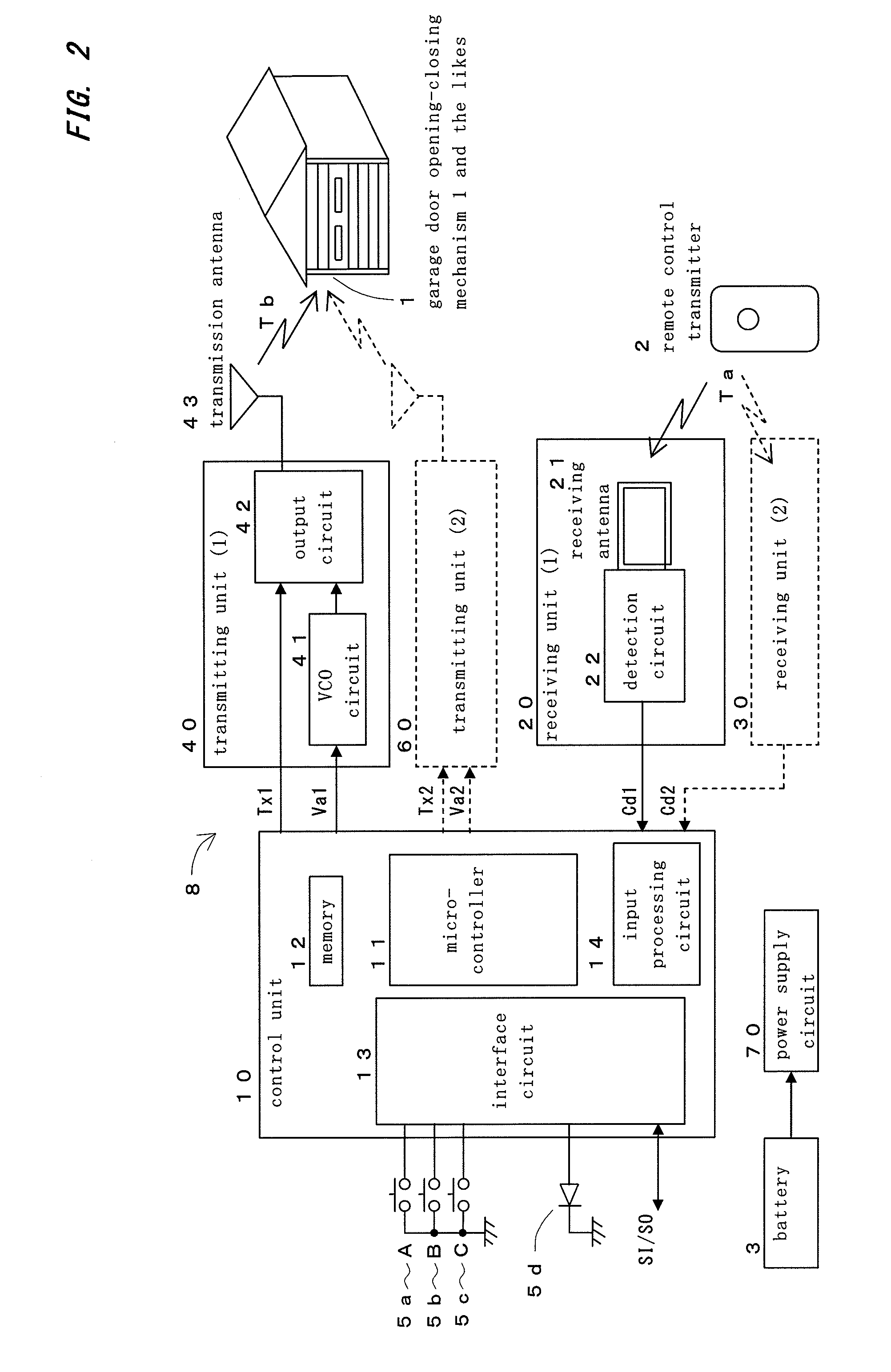In-vehicle wireless system
a wireless system and vehicle technology, applied in the field of wireless systems, can solve the problems of degrading performance, affecting the operation of vehicles with more than one remote controller, and affecting the maintenance so as to achieve the effect of increasing the maintenance efficiency of the in-vehicle wireless system
- Summary
- Abstract
- Description
- Claims
- Application Information
AI Technical Summary
Benefits of technology
Problems solved by technology
Method used
Image
Examples
first embodiment
[0179]FIG. 10 is a circuit diagram showing a specific example design of the receiving unit 20. This receiving unit 20 includes the reception antenna 21, diodes 221 and 222, the operational amplifier 223, the comparator 224, and peripheral devices.
[0180]The reception antenna 21 is a coil-like loop antenna. Each high-frequency signal received by this antenna is detected by the high-frequency diode 221. Since the forward voltage of a high-frequency diode greatly varies with temperature, temperature compensating is performed with the use of the high-frequency diode 222, as mentioned above. The detected signal is amplified by the operational amplifier 223, and is binarized and shaped by the comparator 224. The signal is then output as the control code signal Cd1.
[0181]To increase the sensitivity of the receiving unit 20, an amplifier circuit and a bandpass filter that filters signals in the target frequency band may be provided between the reception antenna 21 and the detection circuit.
[...
second embodiment
[0183]FIG. 11 is a circuit diagram showing a specific design example of the transmitting unit 40. This transmitting unit includes a PWM signal smoothing circuit 41a, the VCO circuit 41, the PLL circuit 44, the ASK modulation circuit 45, the amplifier circuit 46, and the transmission antenna 43.
[0184]The PWM signal (PWM-A1) that is output from the microcontroller 11 of the control unit 10 is smoothed by the smoothing circuit 41a. The capacitance of the variable capacitance diode 411 varies with the voltage generated at this point, and the oscillation frequency of the VCO circuit 41 changes.
[0185]The output of the VCO circuit 41 is input to the PLL circuit 44 via a buffer circuit 412.
[0186]The PLL circuit 44 includes a phase comparator 442, a low-pass filter 444, a voltage controlled oscillator circuit 443, and a divider 441 that divides the frequency of each input signal by 32. The PLL circuit 44 generates a signal of a frequency 32 times higher than the frequency of the signal that ...
third embodiment
[0189]FIG. 12 shows an example arrangement of transmission antennas for performing diversity transmission. Two loop antennas 431 and 432 are placed at a distance from each other and perpendicularly to each other on a substrate 430, so as to provide spatial diversity. The positions of the feeding points of the respective antennas can be differentiated from each other so as to differentiate the polarizations of the transmission waves sent from the respective antennas.
PUM
 Login to View More
Login to View More Abstract
Description
Claims
Application Information
 Login to View More
Login to View More - R&D
- Intellectual Property
- Life Sciences
- Materials
- Tech Scout
- Unparalleled Data Quality
- Higher Quality Content
- 60% Fewer Hallucinations
Browse by: Latest US Patents, China's latest patents, Technical Efficacy Thesaurus, Application Domain, Technology Topic, Popular Technical Reports.
© 2025 PatSnap. All rights reserved.Legal|Privacy policy|Modern Slavery Act Transparency Statement|Sitemap|About US| Contact US: help@patsnap.com



